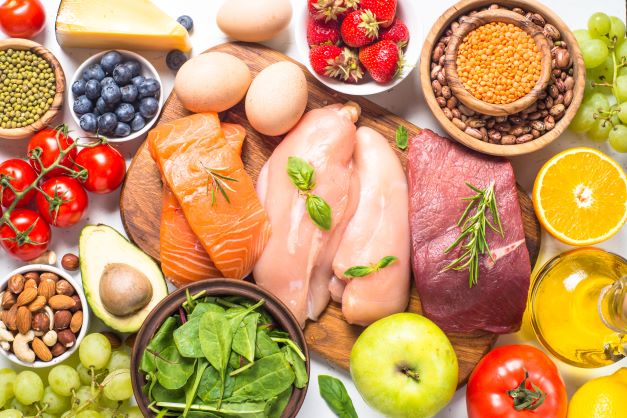Pulses are leguminous crops harvested for dry protein-rich seed, with peas (pisum sativum) and beans (vicia faba) being the major crops in the UK.

Please share resources, information and experiences, relating to food itself.
Recommended Content
Content below is from across the PEP community and is not necessarily endorsed by Stewards or by PEP
Connected Content
A combination of sustainability, health & animal welfare concerns are pushing a shift away from meat in our diets to alternative proteins.
The flour milling industry plays a vital role in feeding and nourishing the nation – flour is an ingredient in 30% of supermarket foods. UK Flour Millers is proud of the part it plays in ensuring the industry continues to operate efficiently and reliably so that everyone can enjoy their daily bread.
Delivering world-class science for our partners, for the future. Fera Science Ltd (Fera), pioneers in original thinking applied, driving innovative products and techniques to identify and detect emerging threats earlier across agri-food science.
TABLE is a global platform for knowledge synthesis, for reflective, critical thinking and for inclusive dialogue on debates about the future of food.
Together, we’re creating plausible pathways, and practical, open science, to achieve Net Zero through the Agrifood system by 2050.
George Eustice presented the response to Henry Dimbleby's National Food Strategy on 13 June 2022. Read the full text at the link below, or the Executive summary
Connecting companies that are developing technologies to commercialise sustainable agriculture.
The SMI Agribusiness Task force makes clear what the private sector can do to make regenerative agriculture a 'no-brainer' for farmers and accellerate its adoption worldwide.
Once upon a time the UK had a clever, innovative thriving horticultural industry. Sales were local and to markets and shop in towns across the UK. We have lost this industry and all that is left are massive businesses on thousands of acres supplying supermarkets and very small scale growers.
In the UK an estimated 3.3 million tonnes of food are wasted before making it off farm. Farmers face numerous barriers to accurately tracking and reducing on-farm food waste. In response to this hidden issue, WWF and Tesco have worked with members of the food system, including farmers, suppliers, retailers and NGOs to develop the Hidden Waste Roadmap. This report sets out actions for food system actors between 2022 – 2026 to support farmers in measuring, reporting and reducing food waste on farms.
Hello reader, Hope you are all well. I'm writing a thesis to study the relationship between agri-food industry companies in the UK and their producers. Make a good deed and help a french girl get her diploma!
Article by Paul Temple in May 2022 for
Farming groups, scientists, and start-ups are teaming up to test how far cultured meat is a threat, or an opportunity, for UK farmers.
This Topic doesn't yet have a Stewarded summary, but connected groups, content and organisations show below. Click the 'Ask to Join' button if you would like to be a Steward for this Topic and provide a summary of current knowledge and recommend useful resources, organisations, networks and projects. "Like" this Topic if you would like to see it prioritised for providing a wikipedia style summary.
This Topic doesn't yet have a Stewarded summary, but connected groups, content and organisations show below. Click the 'Ask to Join' button if you would like to be a Steward for this Topic and provide a summary of current knowledge and recommend useful resources, organisations, networks and projects. "Like" this Topic if you would like to see it prioritised for providing a wikipedia style summary. Branston are creating a potato derived protein product.
The Science and Technology Facilities Council (STFC) Food Network+ (SFN) brings together STFC researchers and facilities with research and industry in the agri-food sector.
Identifying and increasing sustainable practices along the supply and production chains of European livestock.
Ergot is a fungus that grows on rye, triticale, wheat and barley, and to a lesser extent, oats. It also affects a wide range of grasses, particularly blackgrass. Although the disease has a relatively small effect on yield, ergots contain large amounts of toxic alkaloids that can pose a pose a risk to animal and human health.
How we manage our farms and fields is not only important for the nutrition of crops and livestock, but also for the quality and nutritive value of the food we eat.
This face to face workshop at ADAS Postharvest Innovation Centre in Chatteris, Cambridgeshire, will showcase advances in storage technologies and supply chain management to reduce post-harvest losses.
Carbon Zero Consulting, part of the RSK group, invites you to discover what natural environmental heat sources can do for your food and drink manufacturing operations, as it is clear that high energy prices are here to stay for the foreseeable future.
The history of protein, from its 'discovery' and naming in 1838, is a story weaving science, nutritional politics, cultural attitudes to food, and much more. An understanding of this history is invaluable if we are to contextualise the current focus on protein that characterises discourses about health and sustainable food systems, and popular beliefs about fitness and nutrition. In this piece, Tamsin Blaxter and Tara Garnett from Table trace the history of protein from 1838 through to the end of the 'Protein fiasco' in 1974, discovering many echoes of the modern day.
A report launched today at the 2024 Oxford Farming Conference (OFC) firmly states that the practice of farmers subsidising consumers’ appetite for cheap food cannot continue.
How can we improve resilience? Whose job is it to do what – from supporting farmers, to meeting consumer demand?
Join us from 7pm until 8pm to explore the evidence behind whether regeneratively farmed food is more nutritious.
Discover more about how the YEN works in this webinar and how it could help your agricultural suppliers become more resilient, more productive, and even more environmentally friendly.
This guide for fresh produce growers explains how you can increase crop utilisation and profitability through measuring food waste in five simple steps.
Bringing together a vision for achieving the shift towards bean-rich diets.
The report shares the findings from 44 interviews with local food sector practitioners including growers, food processors, wholesalers, retailers, and public sector workers across the UK, on what should be done to transform local food systems.
Prepare for an inspiring conversation on reshaping the future of food with Xander Beks.
The alternative protein industry could be game changing.
Using insects as food and feed is a fast-growing industry. Join this exciting debate where we discuss the challenges and opportunities that are faced with an expert panel.
Report on alternatives to meat protein published by OECD. Abstract: Meat alte


